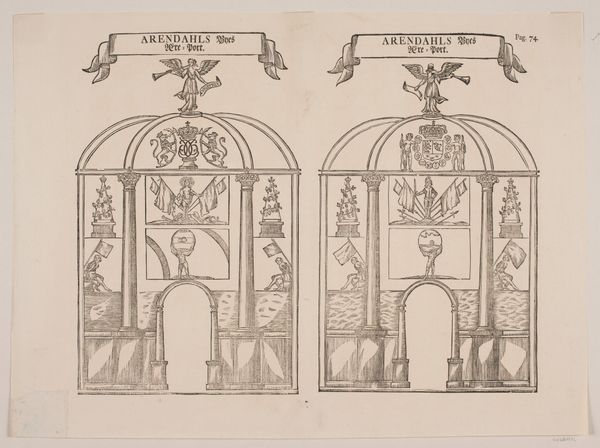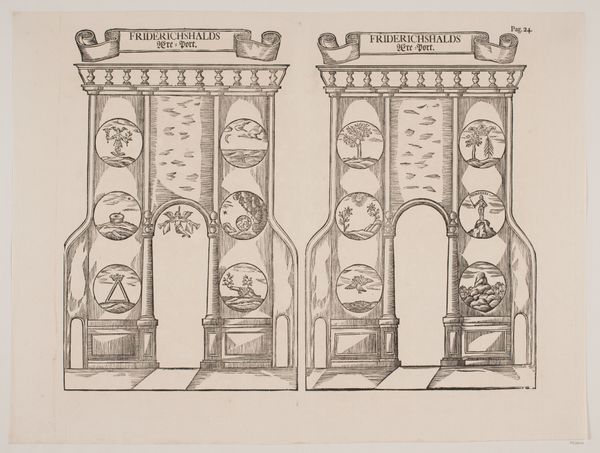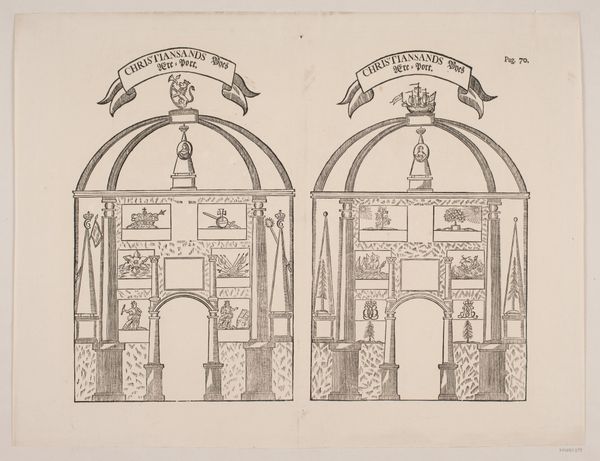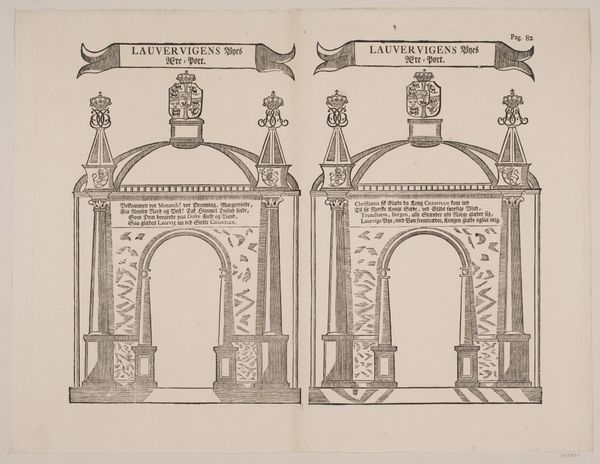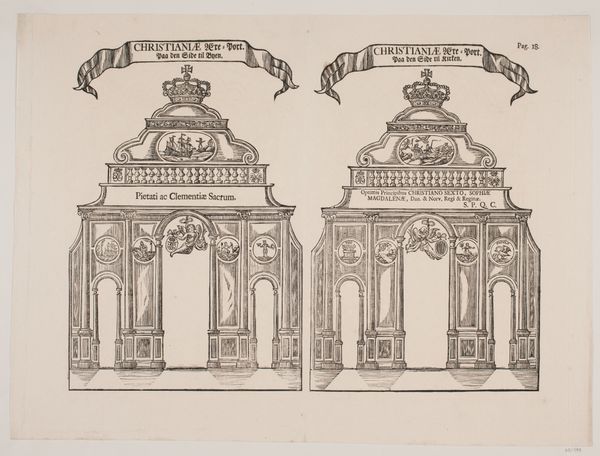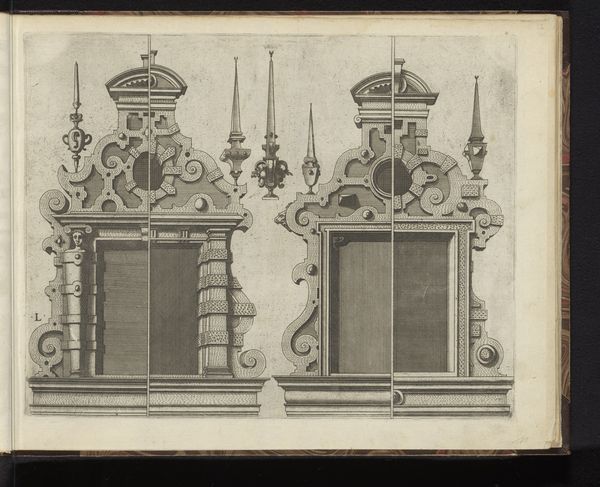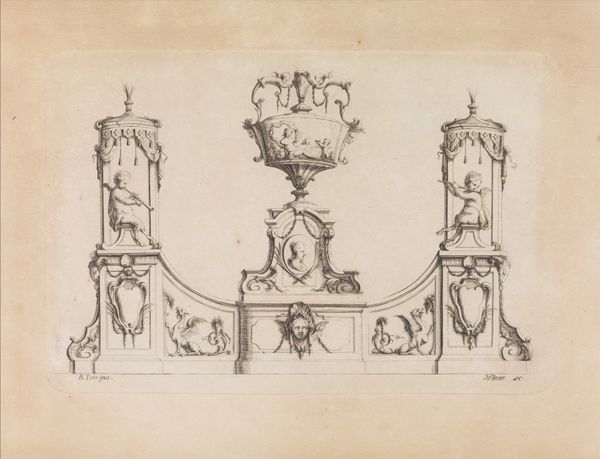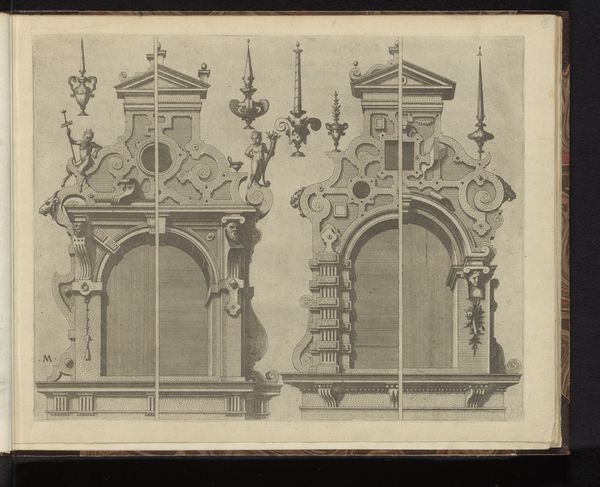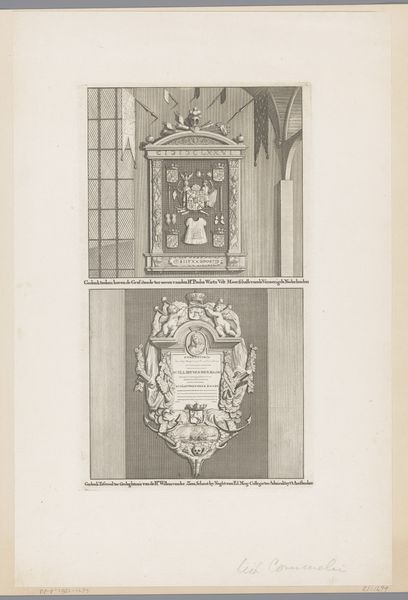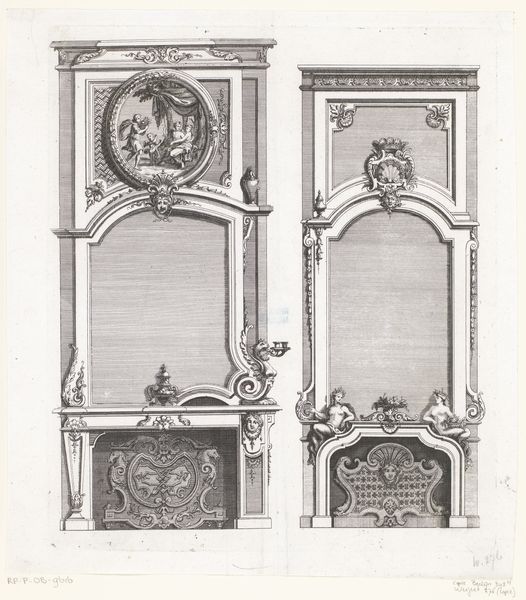
drawing, print, etching, ink, engraving, architecture
#
drawing
#
ink drawing
# print
#
etching
#
etching
#
ink
#
line
#
history-painting
#
engraving
#
architecture
Dimensions: 365 mm (height) x 480 mm (width) (bladmaal)
Editor: So, this is “Trondhjems Æresport,” an etching from the 18th century by an anonymous artist. It almost looks like architectural blueprints. I'm immediately drawn to the details in each portal – there’s so much symbolism, but it all feels a bit… flat, maybe? How should we interpret the significance of these repeated archways? Curator: As a materialist, I focus on the 'how' and 'why' of its creation. This print wasn't merely decorative. Consider the production process: etching was a method of reproduction, enabling the dissemination of particular imagery. So, who was intended to see it and what was the social function? Editor: Okay, so thinking about its production, perhaps it was meant for the emerging middle class? Prints allowed them to participate in artistic consumption, in a way, bringing imagery of nobility into their homes? Curator: Exactly. We see here the trappings of power - crests, symbolic figures, architectural elements - but rendered through the accessible medium of printmaking. This democratization, while limited, shapes our understanding. How does seeing these aristocratic symbols replicated and distributed shift the viewer’s relationship to them? Editor: I see. By distributing these images, were they trying to convey some of the same importance to everyday people? How the noble live, what their life consists of, in almost an instructional manner? Or perhaps the symbols lose some of their gravitas by being accessible to all? Curator: Precisely! It’s about more than aesthetic appeal. What’s striking is the shift in art's function because it’s entering homes previously unexposed. Editor: So we should consider this less as high art and more as a manufactured cultural object with a function in reinforcing or perhaps subtly questioning the power structures of its time? That changes my perspective entirely. Curator: Indeed. We go beyond symbols into how materials and method impacted reception. Always consider who controlled the means of artistic production, as much as artistic creation. Editor: This focus on method and material really puts the image-making into a new perspective. I appreciate you expanding my way of thinking on that point! Curator: A materialist view helps to situate this art not just aesthetically, but within a complex social, economic and historical landscape. I, in turn, appreciate that you reflected on all the nuances and brought to my attention things I had missed before!
Comments
No comments
Be the first to comment and join the conversation on the ultimate creative platform.
